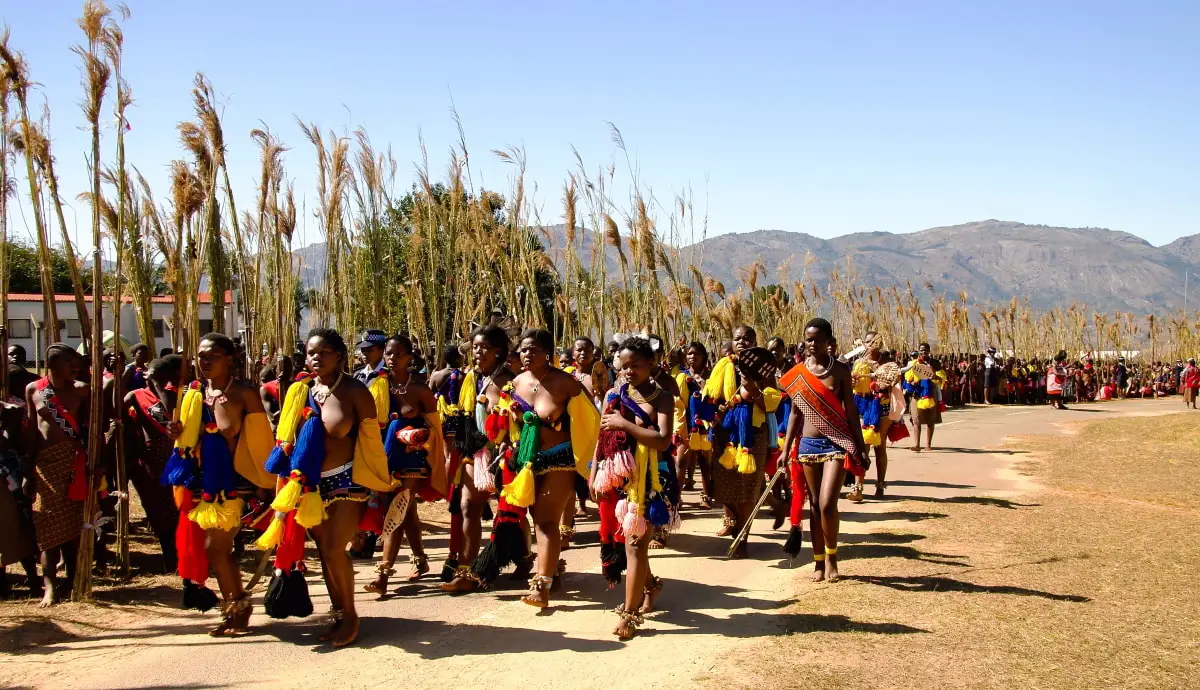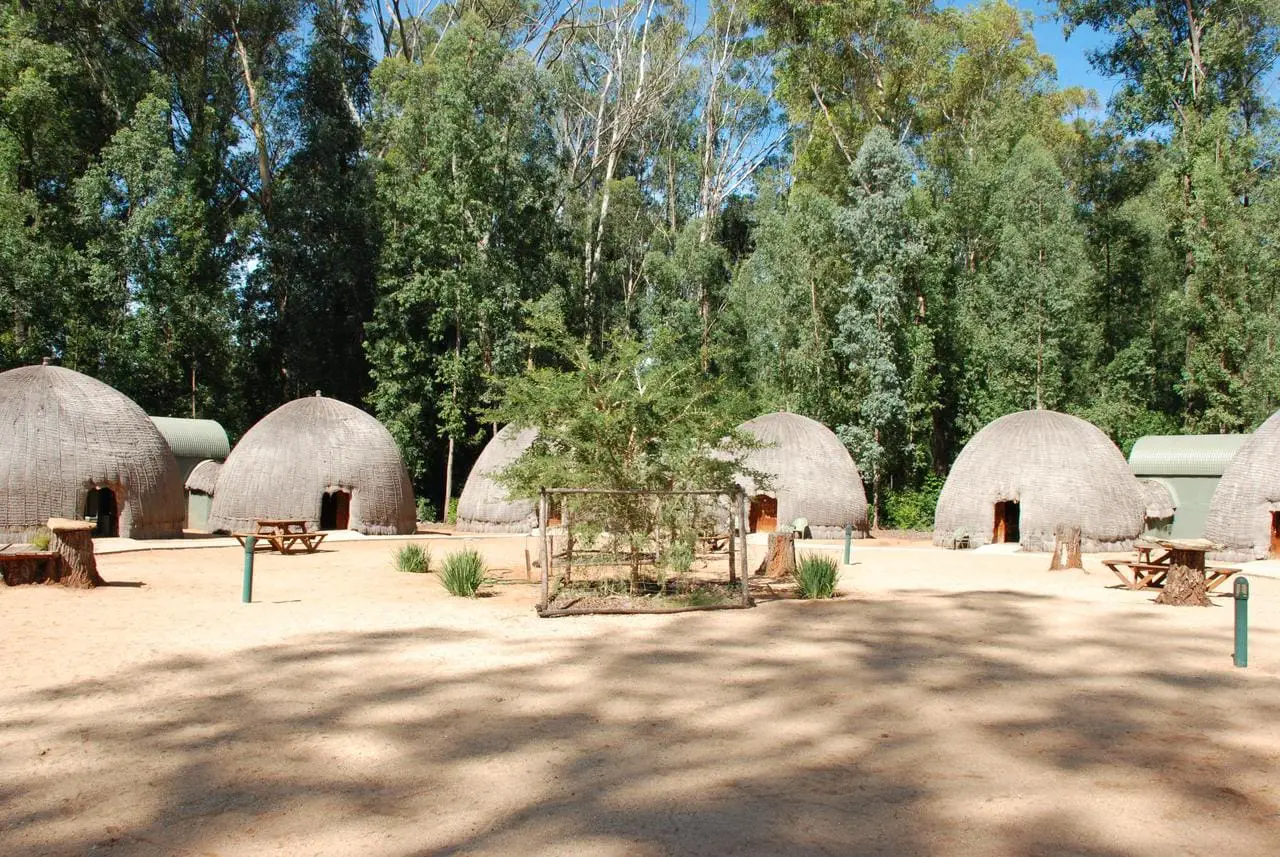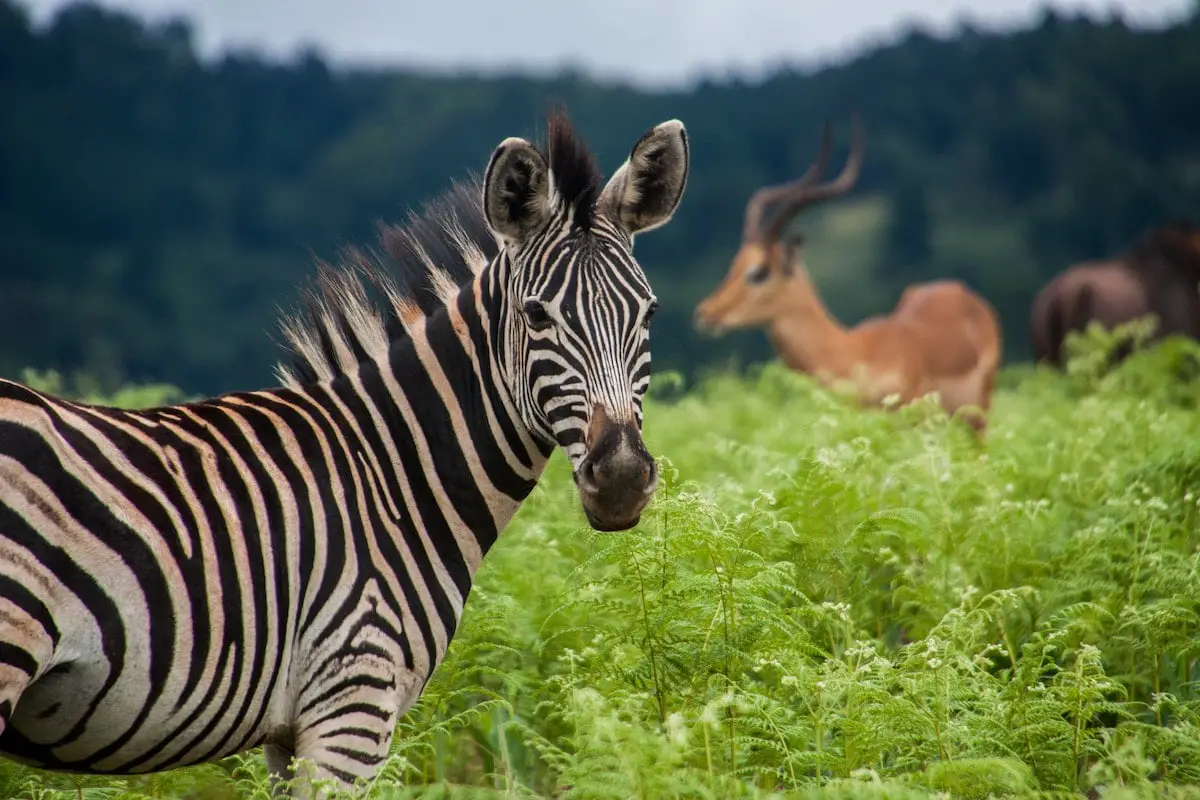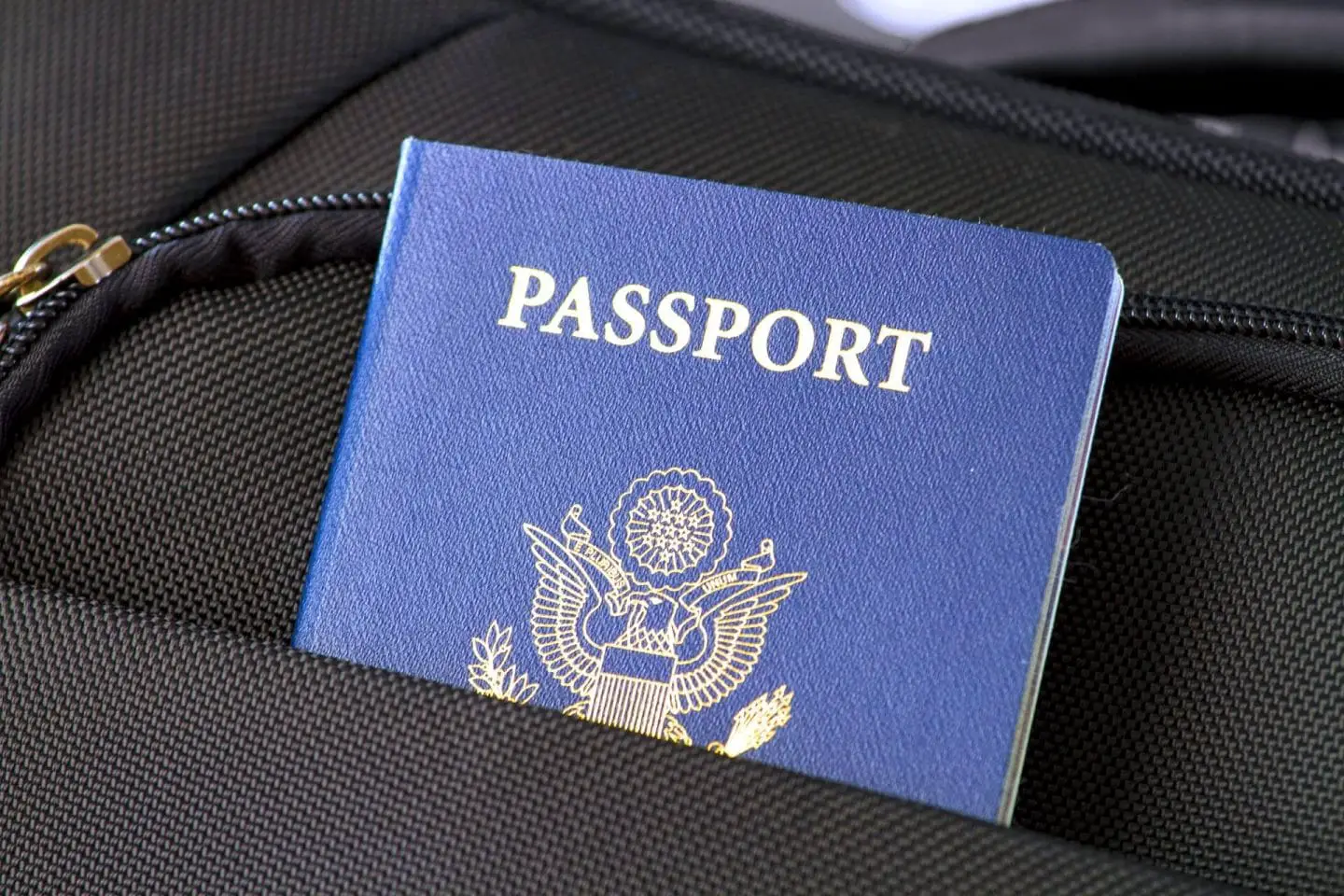This post may contain affiliate links which means we may get a commission if you make a purchase at no additional cost to you. As an Amazon Associate we earn from qualifying purchases. Please read our disclosure for details.
"Each product we feature has been independently selected and reviewed by our editorial team. If you make a purchase using the links included, we may earn a commission."
Besides being the legislative capital of Eswatini, Lobamba is the building block of Eswatini’s long-lived traditions and culture.
Home to the Parliament, King Mswati III, and the Queen Mother, Lobamba has become the most prominent experience of all the festivities. Visiting the city during these exhilarating ceremonies will leave you dazzled, but also enhance your respect for the country.
Besides the ceremonies, the city comprises a tremendous cultural heritage and surprisingly abundant wildlife.
Map of Lobamba, Swaziland
[su_gmap address=”Lobamba” zoom=”10″]Best of Lobamba, Eswatini (Swaziland)
Best Accommodation in Lobamba Swaziland
#1 Mantenga Lodge
#2 Royal Swazi Spa
#3 Sibane Hotel
#4 Lidwala Backpacker Lodge
Best Things to Do in Lobamba, Eswatini (Swaziland)
#1 Explore the City
Lobamba’s historical value and cultural heritage should not be underestimated. Walking around in the city, you can’t help but notice the remains of British Colonialism.
The Parliament of Eswatini, the Embo State Palace, and Eludzidzini Royal Residence are the finest examples of architecture.
To find out more about the history of Eswatini, you must visit the Swaziland National Museum in Lobamba Eswatini, built-in 1972. The museum is quite informative about the past kings, especially King Sobhuza II, whose memorial is kept in the museum.
King Sobhuza II Memorial Park is also worth a visit. It was established in honor of King Sobhuza II’s leadership during Swaziland’s independence movement.
#2 Watch Incwala Ceremonies
The people of Eswatini love their King like Justin Bieber fan, loyal and passionate. Incwala Festival that takes place in December to celebrate the King and the upcoming summer is the most significant proof.
The festival consists of a preparation phase and the main event.

The first day sees young males embark from Engabezweni Royal Residence and march for 50 km. On their way, they cut branches from Lusekwane, an indigenous shrub deemed to be holy.
The following day, the branches are collected and carried to a cattle byre and is inserted on the walls of the King’s private sanctuary.
Day three is similar to Day one, with the boys cutting branches from the red bush Imbondvo to be placed alongside Lusekwane. A thrill-ride of a bull chase takes place in the afternoon.
The main event takes place on Day 4. The young boys perform a ritualistic reed dance in the cattle byre, and the King makes an appearance in his war costume to join the dance. He retreats in his hut after the dance, while the dance performances resume around a massive fire made from the previously collected branches.
I know you might be thinking that the description of the survey might seem too far-fetched, so join the festivals to see for yourself.
#3 Visit Mlilwane Wildlife Sanctuary Lobamba Eswatini
It’s no secret that African wildlife suffering from hunting and poaching activities; however, countries like South Africa and Eswatini aim to conserve and resurrect the wildlife. Mlilwane Wildlife Sanctuary in Lobamba, Eswatini, was established in 1961 in the breathtaking Ezulwini Valley stretching between Mbabane and Manzini. The park quickly became Swaziland’s pioneer conservation area with the 4650 hectares and diverse wildlife.

The Mlilwane Wildlife Sanctuary is still sparsely populated in big five compared to the other Southern African national parks, but you can spot a massive number of antelopes. You would also have better flexibility to go hiking in the mountains and the valley.
[su_button url=”https://africawanderlust.com/eswatini/” target=”blank” style=”soft” background=”#0077be” size=”6″ center=”yes” text_shadow=”0px 0px 0px #000000″]Explore Swaziland![/su_button]Best Things to See in Lobamba
#1 Swaziland National Museum Lobamba Eswatini
The museum offers an excellent introduction to Swazi culture through its exhibitions. The highlights of the museum include a traditional beehive village and a collection of King Sobhuza II cars from the 1940s.
#2 Eludzidzini Royal Residence
The queen mother’s royal residence is a magnificent building where important ceremonies like Incwala reach their climax. The house is generally closed to the public; however, it is open to visitors during festivals like Incwala.
#3 Somhlolo National Stadium
For soccer fans, Somhlolo National Stadium is quite a satisfying attraction that hosts not only important soccer games but also some important events like coronations.
Best Places to Eat in Lobamba Eswatini (Swaziland)
#1 Luxy Garden Restaurant: casual atmosphere, friendly staff, reasonable prices, and several options for vegans.
#2 Sheba’s Rock Spur: if you eat meat, you should try their steak. The restaurant is located in Lobamba Gables Shopping Center.
#3 Mugg & Bean Swaziland: the South African chain Mugg & Bean is now in Swaziland! Their friendly staff, tasty breakfast, and balcony views will help you wake up into an African dream!
Typical Costs: Planning a Trip to Lobamba Swaziland
The currency is Swazi lilangeni, E
1 USD = 15.08 E
1 EURO = 16.50 E
1 GBP = 18.59 E
Accommodation
- Campsite in a nature reserve = 130 E per person per night
- Double room in a high-end hotel= 1500 E for two people
- Standard hotel- double room = 700-900 E for two people
- Hostel dorm bed = 160-200 E per person
Food
- The main dish at a high-end restaurant= 150-200 E
- The main dish at a local restaurant = 60-75 E
- The main dish at a standard restaurant = 100-150 E
Transportation
- Taxi from Mbabane to Lobamba = 150-180 E
- Car hire per day = 300 E
Fun
- Guided Safari in Mlilwane Wildlife Sanctuary = 350 E
- Cultural expedition tour = 950 E for the full-day
Lobamba Swaziland Travel Tips
Best Months to Visit Lobamba
The summer is hot and humid with heavy rain. So you may want to avoid hiking and other outdoor sports, without first checking the weather forecast.
Keep in mind that the Incwala festival takes place in December. So, you should have a prioritized list of what you want to see before your trip. The best option would be to visit just before the rainy season begins, so you can enjoy a relatively milder climate and yet still attend Incwala.
Weather in Lobamba
Lobamba has a subtropical climate with rainy and humid summers from October until March, while the rest of the year is mild and sunny.
How to Save Money in Lobamba and What You Need to Know
- Stores at the local market expect you to bargain, so do not be shy and do it! You will save a lot of money in the long run.
- Cities of Eswatini, including Lobamba, are considered to be safe, although petty crime and scams do happen in urban areas.
- Get accommodation in well-known hotels to guarantee your belongings is safe.
- Taking a photograph inside King’s Sanctuary and Queen Mother’s residence during the Incwala ceremony is prohibited.
- Tap water is NOT drinkable.
- Eswatini is in a high-risk Malaria zone. Consult with your doctor before the trip to find out about any vaccinations you need to take.
- Eswatini has one of the highest HIV rates in Africa for people between the ages of 15-50. You should always use protection if you engage in any sexual activities.
The Culture & Customs in Lobamba Swaziland
Language
The two official languages are English and Swazi, Zulu, Tsonga, and Indian are also spoken among minorities.
Tipping
A tip of at least 10% of your total bill is expected and appreciated when on services rendered.
Wildlife

Mlilwane Wildlife Sanctuary in Lobamba Eswatini is abundant in antelopes, giraffes, zebras, and hundreds of bird species.
Getting Around Lobamba
The closest airport to Lobamba is King Mswati III International Airport. Shared taxis (minibusses) run regularly from the airport to Ezulwini and Malkern Valleys, which costs E10 per ride. The buses stop in Lobamba along the way.
Entry & Exit Requirements

For citizens of the United States, the European Union, and some other countries, you will not need a visa to visit the Kingdom of Swaziland.
You will, however, need a passport that is valid for at least three months after the last day of your trip, as well as copies of your reservations and return tickets.
Visit this page if you need additional information on what countries citizens are required to obtain a visa before entry.
Conclusion
We hope you enjoyed our post on the best of Lobamba. For more inspiration on places to visit in Swaziland, our Mbabane city guide, Hlane Royal National Park, What to Pack for Swaziland will be helpful.
If you plan on visiting multiple countries in the region, then you should check out our Travel Guide, Packing List, and African National Parks pages.
We will love to hear your thought. Did you visit Swaziland? If so, how was it? If not, what additional information do you need from you to make planning your trip a breeze? Happy traveling!
Love it? Share and Pin it!

This is very great information anyone travelling to Swaziland would definitely find it very helpful. Thanks you.
Author
We’re glad you enjoyed our post, Stean! Let us know how we can be of help or support.